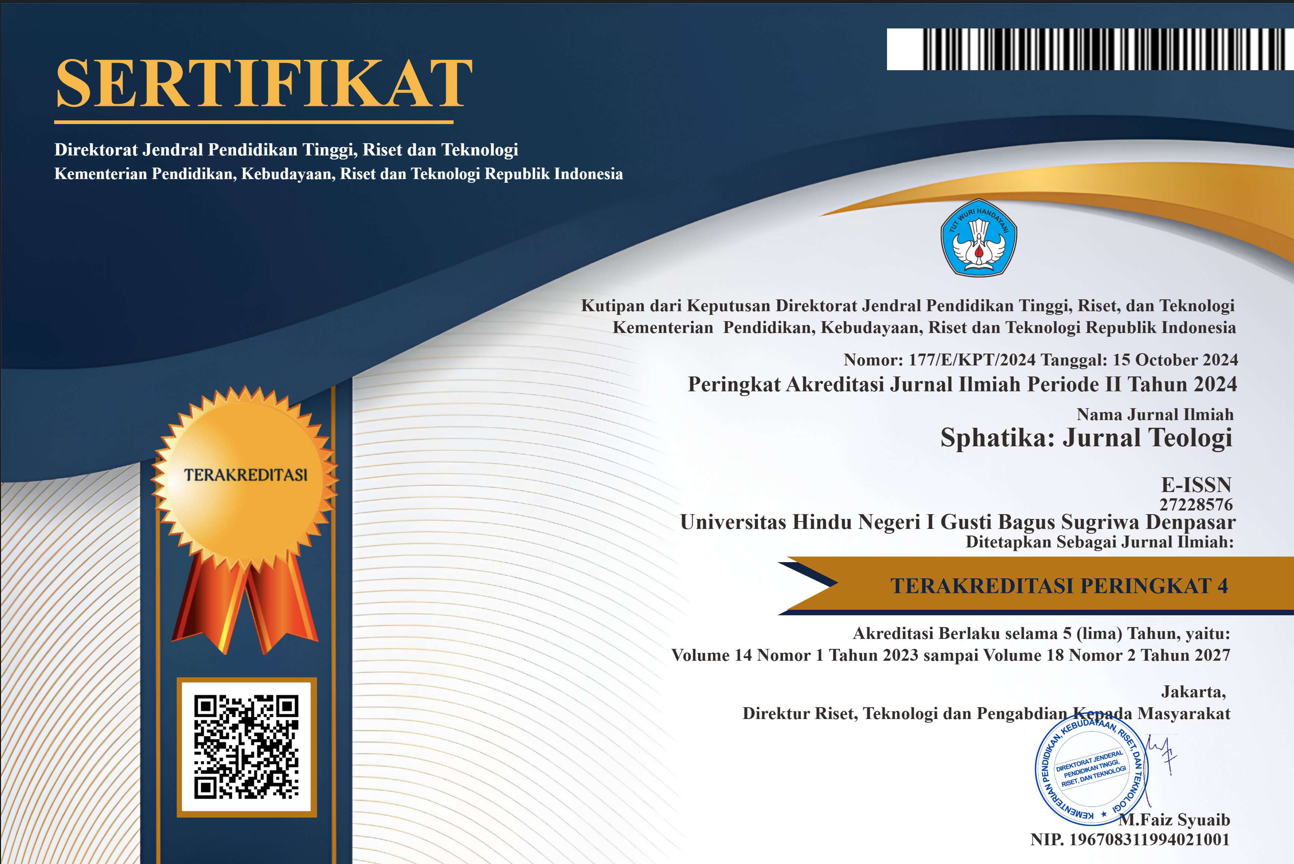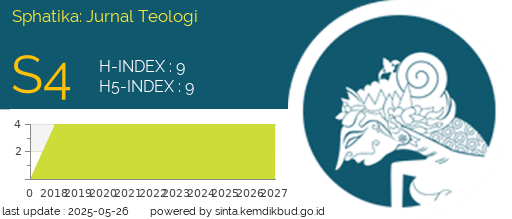Boneka Arwah (Spirit Doll) Perspektif Agama Hindu
DOI:
https://doi.org/10.25078/sphatika.v13i1.1120Keywords:
Hindu religion; spirit dollAbstract
Spirit dolls are dolls that are intentionally made to be infiltrated by the spirits of people who have died. These dolls are then marketed by agents to be adopted and treated like living humans. The culture of adopting this spirit doll started in Thailand around 2014, which then spread to Indonesia. The spirit doll reminds us of the essence of every belief in the world, namely the belief in animism and dynamism. Hinduism has the concept of reviving the spirit of statues or buildings which is similar to filling the spirits of spirit dolls but essentially has a difference in the procedures and objectives. Spirit dolls are filled with the spirits of people who have died, while in Hinduism the ceremony is aimed at purifying statues and buildings to make them habitable and worthy of worshiping God. Hindus should not adopt the spirit doll because there is no study of Hindu law that legalizes the adoption, besides the purpose of this adoption is contradiction to the catur purusa artha.
References
Ambarnuari, M. (2019). Upacara Ngaben Warga Panyuwungan Di De sa Abianbase Gianyar. Pangkaja, 22(agama hindu), 98. http://www.ejournal.ihdn.ac.id/index.php/PJAH/article/view/1685
Dhavamony, M. (1995). Fenomenologi Agama. Kanisius.
Donder, I. K. (2006). Brahmavidya: Teologi Kasih Semesta Kritik Terhadap Epistemologi Teologi, Klaim Kebenaran, Program Misi,Komparasi teologi, dan Konversi (1st ed.). Paramita.
G. Pudja dan Tjokorda Rai Sudharta. (2004). Manava Dharma Sastra. Paramita Surabaya.
Harsananda, H., & Gaduh, A. W. (2021). Hyper-Ritualitas : antara Determinisme Teknologi dan Hindu Nusantara. 12(1), 78–87.
Kajeng, I. N., & Dkk. (1997). Sarasamuccaya. Paramitha.
Ngurah, N. . G., & Wiratmadja, I. A. (2012). Murddha Agama Hindu. Upada Sastra.
Pals, D. L. (2012). Seven Theories Of Religion (2nd ed.). IRCiSoD.
Soekanto, S. (2012). Sosiologi Suatu Pengantar (44th ed.). PT. Raja Grafindo Persada.
Sivananda, S. S. (2003). Intisari Ajaran Hindu. Paramita.
Wiana, I. K. (2004). makna Upacara Yajna dalam Agama Hindu. Paramita Surabaya.
















